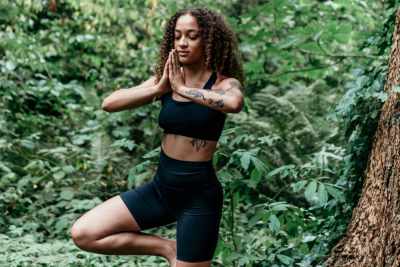Yoga is not just a practice that offers stress relief and relaxation for adults. Kids are also able to experience the benefits yoga. In recent years, mums and bubs yoga classes have grown in popularity and now yoga for children is also taking off. Yoga for kids provides a fun and playful way to boost your child’s confidence, concentration, co-ordination and overall health and wellbeing.
What to expect at a kids’ yoga class
A children’s yoga class will differ from an adult class. Children have shorter attention spans and higher energy levels, meaning a very different style is needed to cater to these needs. Kids’ yoga classes are dynamic, incorporating games, stories and music and integrating their vivid imagination.
Like adult classes, a children’s yoga class will involve a series of postures. Postures that are favourites at kids’ yoga include the downward dog, the lion pose and cobra. Many yoga poses are derived from nature and this allows children to draw on their imagination. In some classes, the asanas may be linked to songs and stories and children are able to imitate the animals the postures are named after.
Kids’ yoga will also include breathing exercises but will explore these concepts in a playful way, such as with a bubble blower. Classes will then conclude with relaxation. This may involve guided visualisations that allow children to use their imagination and become aware of the physical sensations of their bodies.
Kids’ yoga classes can be further broken down by age groups. For instance, a class for small children will be a very sensory experience. As the children grow, their yoga routines can become more robust and complex.
Essentially, the same basic principles of yoga are still taught in a kids’ class, but in a playful manner that children can easily relate to.
The benefits of yoga for kids
The benefits yoga can offer children are significant. Yoga can help kids build strength and flexibility and allow them to experience the benefits of relaxation. However, yoga also offers other benefits that will assist them as they develop and grow.
For instance, yoga can help boost confidence as children progress in their practice. It also allows shy children a way to interact with their peers and gives them the tools to better deal with stressful situations. Yoga also creates greater body awareness so children can learn what feels right and what limits are.
Yoga unites the mind, body and spirit. Yoga’s physical postures, along with breathing exercises and relaxation techniques, work to build concentration. For children, this is a learning tool that can be utilised in the classroom.
Yoga also has beneficial effects on behaviour by creating calmness and a relaxed state. Studies have shown that yoga is particularly beneficial for children with autism and ADHD as it improves body awareness, interaction and concentration as well as general health and wellbeing.
Find out if there is a yoga centre near you offering kids’ classes.










